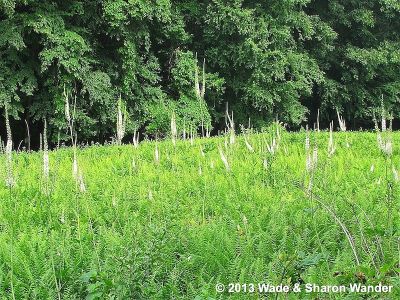New Jersey Butterfly Club
A chapter of the North American Butterfly Association (NABA)
Appalachian Azure
Celastrina neglectamajor
Identification: Very small—about 1.25". Seldom seen with wings open. Below: Very pale bluish-white, with small, scattered gray spots that are sometimes nearly absent. Similar species: Very similar to Spring and Summer azures but perhaps a bit larger. Difficult to separate with confidence (see Comments below).
NJ Status and Distribution: Resident. Local in Hunterdon, Somerset, Warren, Morris, Mercer, and Sussex counties.

Habitat: Deciduous woodland edges and openings with food plant.
Flight Period: From about early May to late June. Extreme dates: 5/7—6/30.
Caterpillar Food Plants: Flower buds of Black Bugbane (Actaea [formerly Cimicifuga] racemosa), a tall, native perennial found in local colonies, primarily in the Highlands and Ridge and Valley provinces.
Overwintering Stage: Pupa.
Good Locations: Sourland Mountain Preserve, Teetertown Preserve, Schooley’s Mountain CP, Stokes SF, Voorhees SP, Ted Stiles Preserve (aka Baldpate Mountain).
Comments: The best way to find this species is to stake out large colonies of the food plant in late May and early June. If you see any azures laying eggs, they are most likely to be Appalachians. But butterfliers beware—Summer Azure may use this food plant as well!

Hardwick Twp., Warren Co., NJ, 5/25/24.

Female ovipositing on flower buds of Black Bugbane, Hardwick Twp., Warren Co., NJ, 5/25/24.

Eggs on flower buds of Black Bugbane, Hardwick Twp., Warren Co., NJ, 5/25/24.

Caterpillar on Black Bugbane, Hardwick Twp., Warren Co., NJ, 6/19/23. The easiest way to find the very cryptic caterpillars is to look for attending ants on budding flower spikes of the food plant.

Stand of Black Bugbane in transmission line ROW. This locally common upland member of the Buttercup Family is the only known host plant for Appalachian Azure.